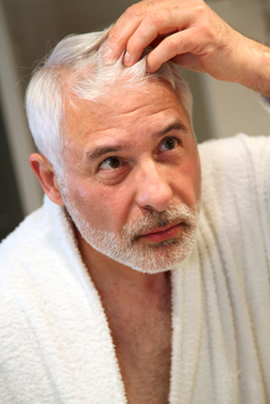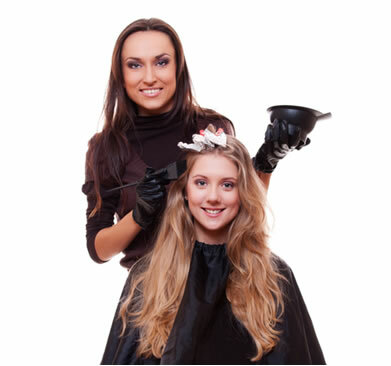The practice of changing hair color is very common nowadays, but it has been known for over 2000 years. The Saxons, for example, were people who liked to paint their beards in strong and different colors, such as blue, green and orange.
These hair dye practices have continued over the years, for different reasons, the main ones being: to hide gray hair, for aesthetic reasons or to claim to belong to a certain group and differentiate from the society.

Hair color depends on the combination of four types of melanin. Melanin is a protein present in the hair cortex that forms chains that form fibers throughout the hair. For example, see the two types of melanin below and the corresponding colors:
Eumelanin -brown and black hair
Pheomelanin - reddish brown and blond hair
Darker hair contains a greater amount of melanin granules in the cortex, while blonde hair contains little melanin.

As the person gets older, there is an absence of melanin in the cortex, which leads to a reduction in pigmentation and, consequently, the appearance of gray hair.

The dyes used to change the color of hair can be from natural or synthetic origin and are classified into temporary, progressive, semi-permanent or permanent. See each one:
- Temporary: As the name says, they change their hair color for a short period, as they come out with the use of shampoos. This is because they are compounds of high molar mass acid that do not penetrate the hair fiber, they are only on the surface;
Progressives: Its composition is based on aqueous solutions of metabolic salts. An example of this type of dye is those containing the element lead (Pb). This technique is one of the oldest, and in the Greco-Roman period, lead oxide (PbO) mixed with calcium hydroxide [Ca (OH)2] and a little water was used a lot. Lead reacts with sulfur from hair proteins, forming lead sulfide, which is black in color.

It is a dye that lasts longer than the others, but it has a negative aspect: Lead is a heavy metal that can accumulate in the body leading to health problems such as neurological, stomach and even osteoporosis.However, there is no evidence to support the link between hair dyes and cancer.
As for the use of lead acetate in progressive hair dyes, O ANVISA Technical Opinion (National Health Surveillance Agency) says that scientific studies indicate that there is a low absorption of this substance by the scalp, but its use should be limited by the following restrictions:
a) “The lead content in the final product must not exceed 0.6%;
b) The product cannot be used for coloring whiskers, eyebrows and eyelashes or on the hair of other parts of the body, that is, the product must be applied exclusively to the scalp hair hairy."
- Semi-permanent: Partially penetrate the hair fibers, remaining a little longer than temporary dyes, because the pigment oxidizes inside the fiber promoting color and, thus oxidized, it is more difficult to cross the fiber. It is usually used together with hydrogen peroxide, which promotes oxidation.
An example is the henna, also long employed. It is extracted from the plant species Lawsonia inermis, and its active principle is lawsone (2-hydroxy-1,4-naphthoquinon), which imparts a brown to reddish color.
- Permanent: Like the previous ones, they penetrate the hair fiber, suffering oxidation with hydrogen peroxide, but because they are molecules small, which come together and give rise to large structures, the result is that they stay longer inside the fiber.
In addition to the lead mentioned above, the dyes contain other substances that can be toxic to sensitive and allergic people, such as ammonia. To avoid this, it is best to always do a test beforehand, applying a little of the product to the skin and waiting to see if there is a burning sensation or redness. If this happens, do not use the product.
Other tips given by ANVISA (National Health Surveillance Agency) they are:
- Do not dye your hair if there are scalp lesions;
- Check the product name, manufacturer and registration with Anvisa.
- Do not use products made at home, it is best to look for a specialized professional in a salon;
- This specialist must wear gloves, mask and keep the environment airy;
- Towels must be clean, for individual use, and brushes and combs must also be clean.

By Jennifer Fogaça
Graduated in Chemistry
Source: Brazil School - https://brasilescola.uol.com.br/quimica/quimica-no-tingimento-dos-cabelos.htm
